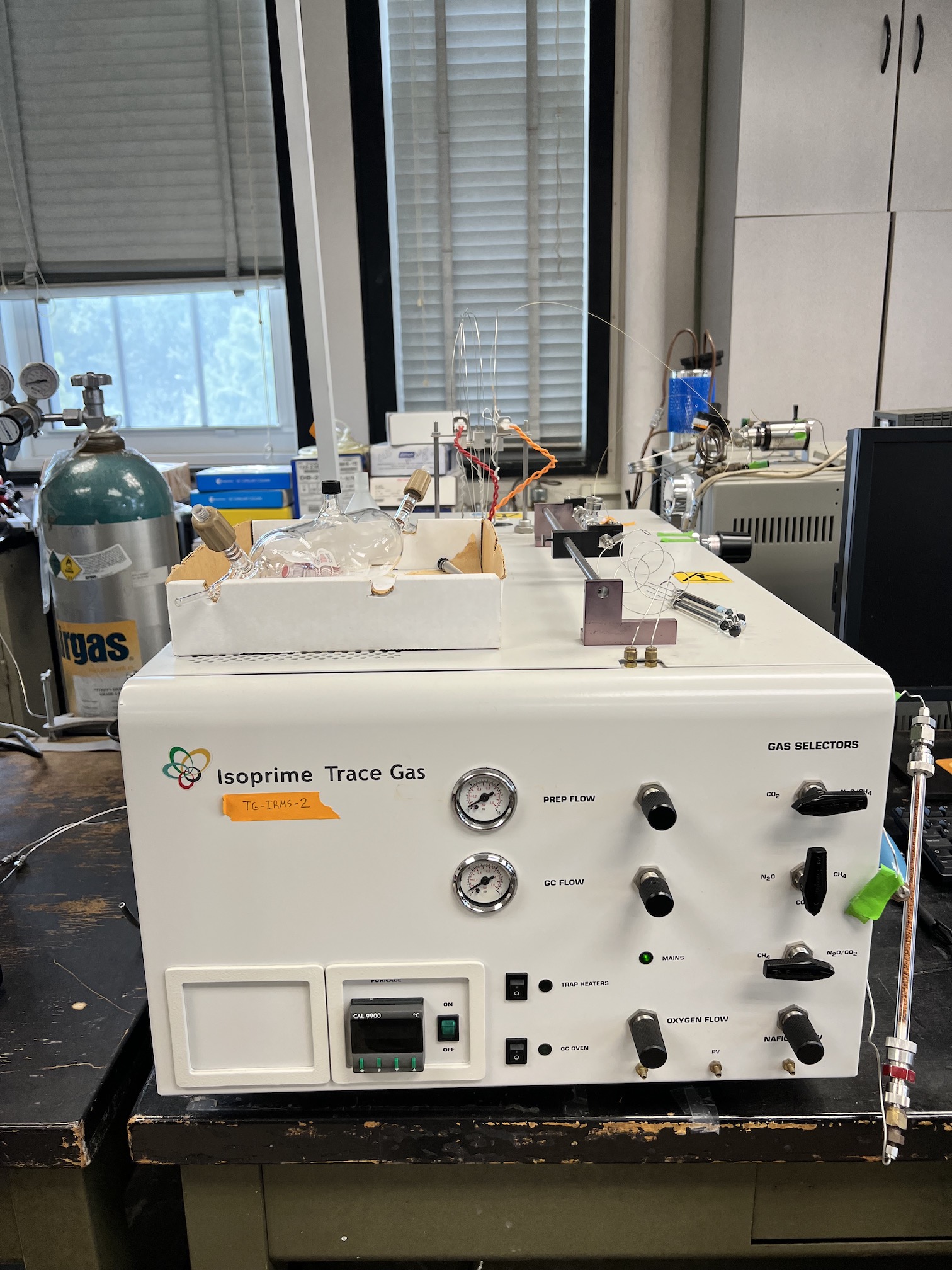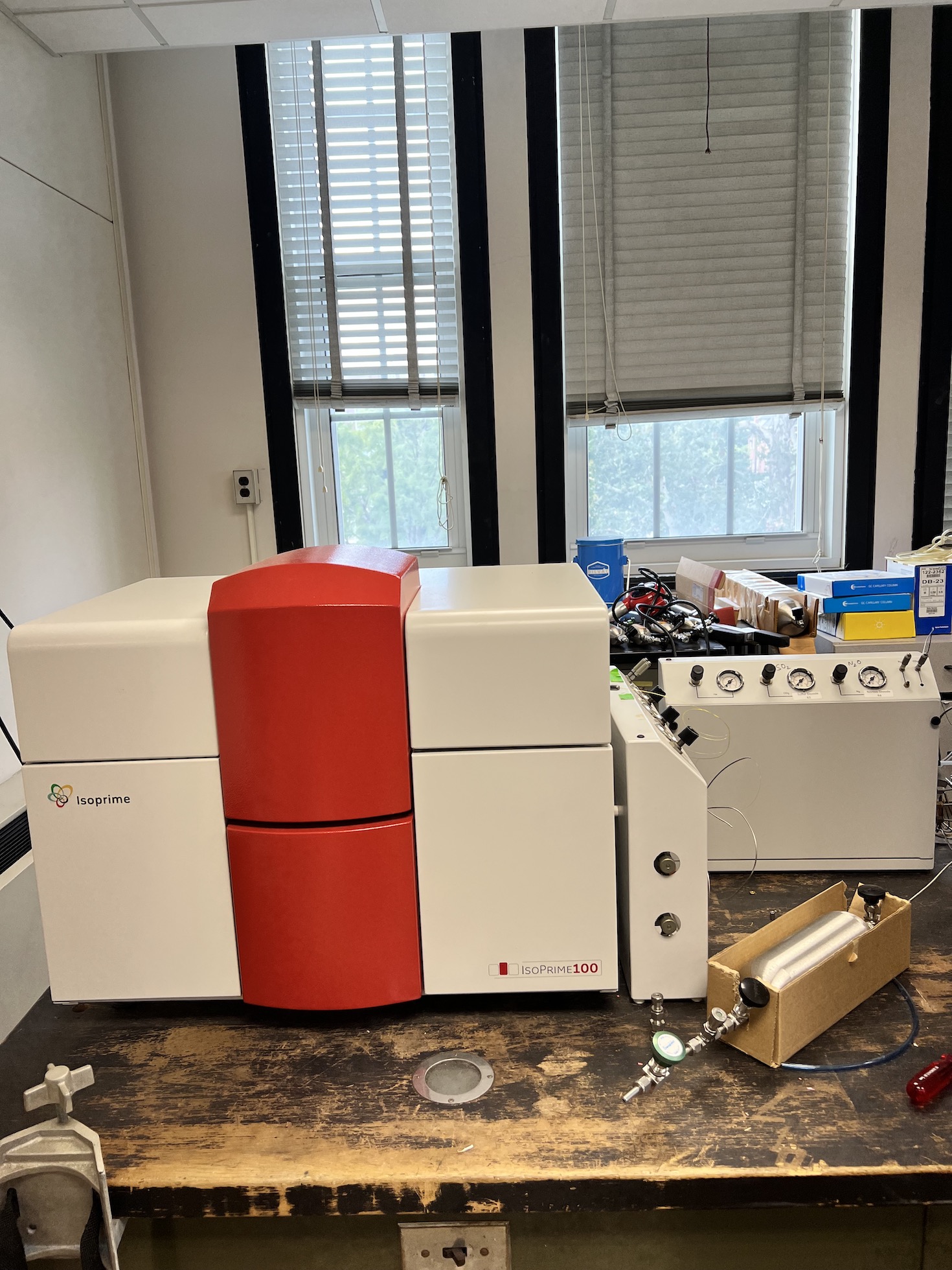Isotopic analysis of Nitrous Oxide (N2O) gas.
Sample Requirements
- For reliable isotope measurements we need to inject a minimum of 2 nmole N2O for 15N and 18O analysis. We need a minimum of 6 nmole N2O if site preference analysis is requested.
- Samples must be sent in serum bottles that are sealed with grey butyl septa (20 mm Grey Butyl Rubber Septa part # 20-0025, Microliter, Wheaton Company). Please note that we have tested a few kinds of septa for sample integrity. This is the only septa that showed no effect of storage (up to 3 months) on the isotopic composition of the sample.
- Please talk to us before collecting samples for analysis. Use the smallest serum bottle size that can hold 6 to 50 nmole N2O sample.
- Samples should be grouped together based upon anticipated N2O content. This allows us to decide the concentration range of the standards.
- Samples should preferably not be enriched by more than 5 atom percent. If needed, we are able to handle up to 10 atom percent enrichment. Please let us know the expected level of enrichment in the samples. Arrange samples in the increasing order of enrichment.
 |
 |
Samples are analyzed using our Trace Gas Inlet (Elementar) coupled to the Isoprime 100 IRMS (Elementar). Natural abundance isotope data is calibrated by analyzing calibrated N2O tank standards at different concentrations. In-house standards are prepared by mixing the natural abundance tank standard with enriched N2O to calibrate the enriched isotope data.